Mother-Daughter Duo Test Community Science Toolkit for Reliable Microplastic Data Collection
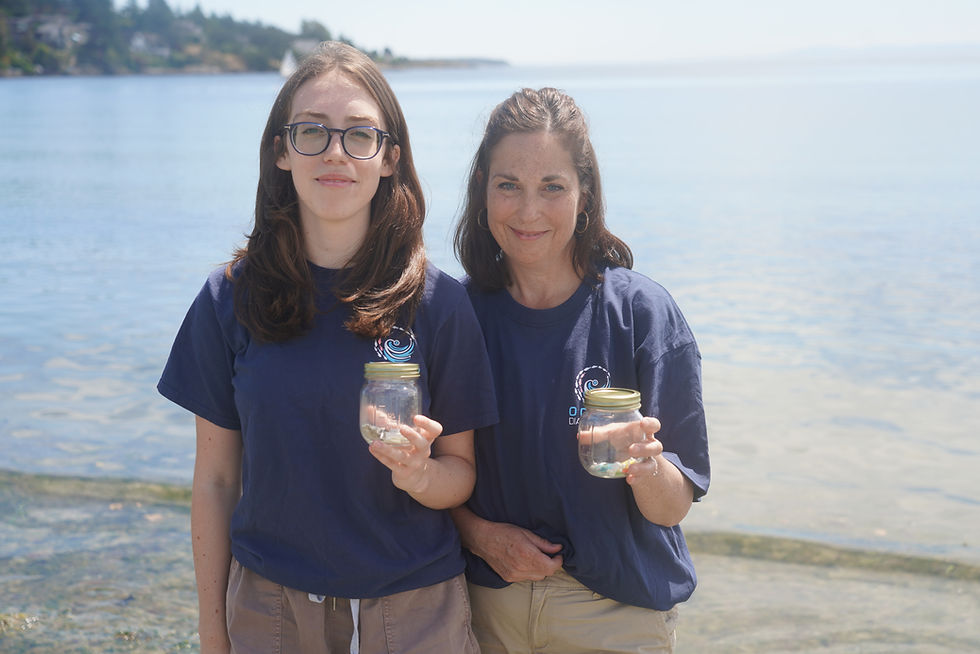
Glenys and Taya Holmes are a mother-daughter microplastic pollution tackling team!
Bothered by the presence of plastic on their favourite beaches and keen for family time in an “outdoor lab”, Glenys and Taya volunteered with Ocean Diagnostics as community scientists. They tested tools and protocols that are now available to be used by the global public to contribute local microplastic data that can inform solutions.
The duo tested Ocean Diagnostics’ new Community Science Toolkit and collected microplastic samples on beaches in Greater Victoria. Along with other volunteers, their work formed the basis of the recently released microplastics dataset for Vancouver Island beaches. The data they collected is key to understanding what microplastic pollution exists locally, so policy makers can stop it at the source.
Growing up within a short distance from the ocean, Glenys and Taya always enjoyed activities on the water: paddle boarding, kayaking, camping, you name it! They sometimes came across plastic pollution but were not overly familiar with microplastic pollution.
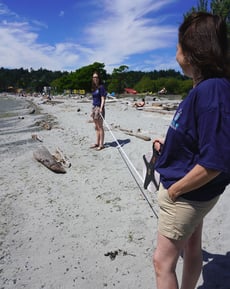 “Sometimes we would see litter and be bothered, but I didn’t think much about microplastics, until school and volunteering with Ocean Diagnostics,” says Taya.
“Sometimes we would see litter and be bothered, but I didn’t think much about microplastics, until school and volunteering with Ocean Diagnostics,” says Taya.
After this experience, Taya finds herself noticing plastic everywhere. It has made her think about her own consumer choices and how many microplastics can be released when she does laundry.
Glenys, Taya's mother, explains that she had not thought much about microplastics as well, but now she is inspired to be more protective over the beach.
“Seeing microplastic pollution made me think about all the beautiful sea creatures that could be ingesting microplastics and be harmed by them,” says Glenys.
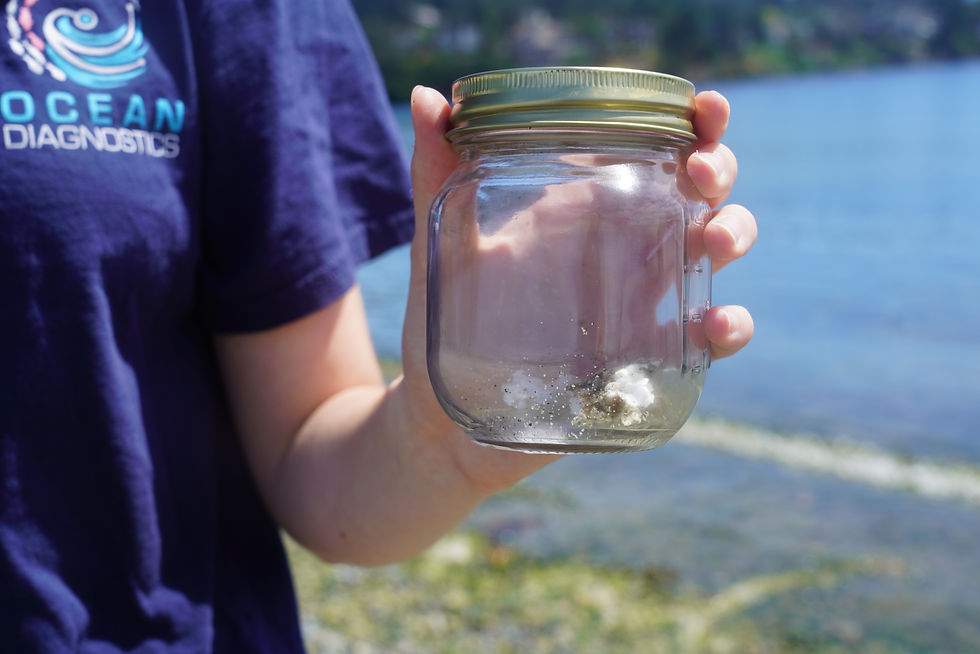
Over six months, Glenys and Taya, tested Ocean Diagnostics’ new Community Science Toolkit, designed for community scientists to collect reliable data on microplastic pollution.
Plastics smaller than five millimetres in size are called microplastics and their sources typically vary by location. These small plastic pieces can find their way into the environment through storm drain runoff, wastewater, larger plastic litter breaking down and more.
Due to their size, they can be difficult to collect, especially in a standardized way. Hence the need for a Community Science Toolkit.
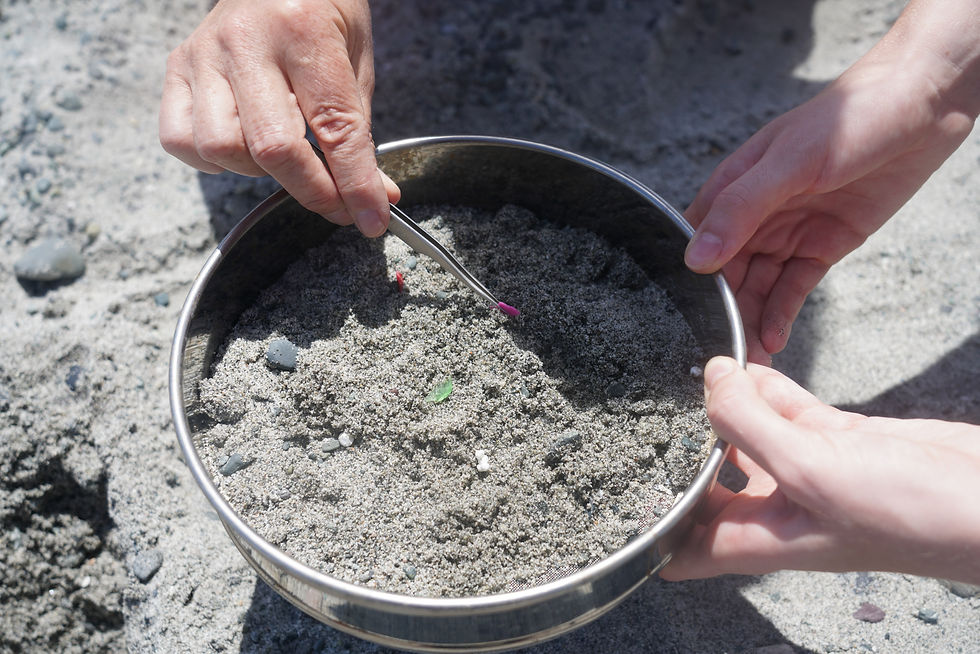
The mother-daughter duo sampled sand, ocean water and storm drain outflow on local Victoria beaches. They used new tools and Ocean Diagnostics' Community Science protocol to search for microplastics.
Taya explains that using the tools was a learning curve at first, but she quickly got a hang of finding the site, sieving sand, filtering water and picking out microplastics.
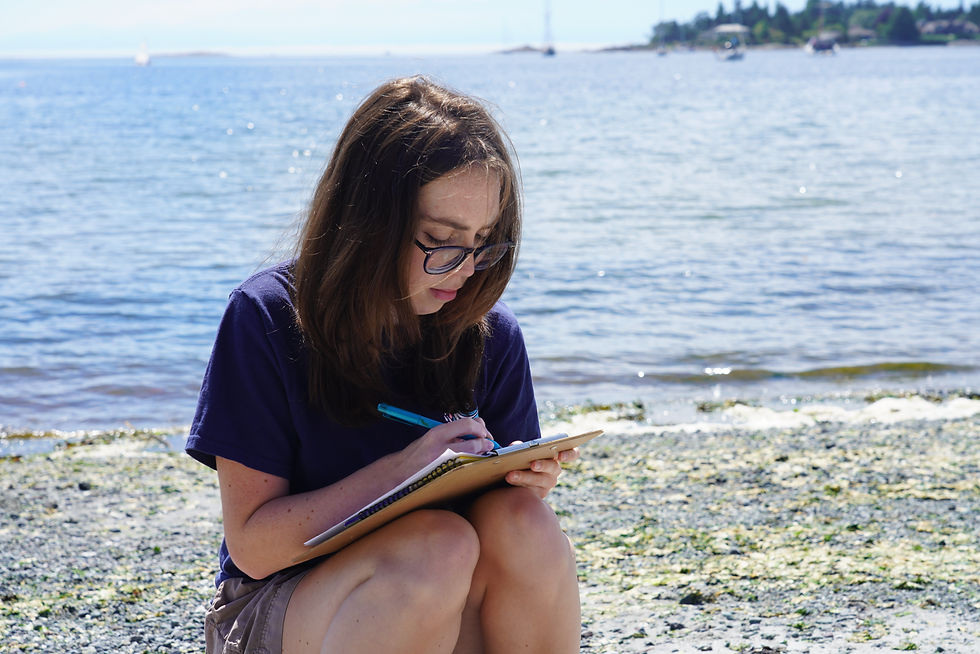
Taya has always loved science but did not particularly enjoy spending time in a laboratory. Testing these tools was an opportunity to be in an outdoor lab... a lab on the beach!
The real fun was in the adventure of it all.
“The storm drain was always the most interesting,” the team joke. "We had to climb over tall weeds and logs to get to a tiny trickle that was the storm drain. It was adventurous.”
Storm drains collect rainwater from city streets and bring it out to a body of water to help prevent flooding. Though storm drains are extra adventurous to sample, microplastics in these water outflows provide information about how much microplastics come from city streets. As you may imagine, this information can help the government decide if they need to focus on city runoff as a source of microplastic pollution.
The team found microplastics, but they were very tiny and hard to identify. Protocols designed by Ocean Diagnostics’ helped to ensure the microplastics found were characterized in a standardized way, so they can be interpreted across many community studies.
The Community Science Toolkit and Ocean Diagnostics’ Saturna Imaging System makes characterizing microplastics as a community scientist easy, no matter your age or experience.
“We had never used tools like this before, but if I can do this anybody can do it!” Glenys says with a big smile.
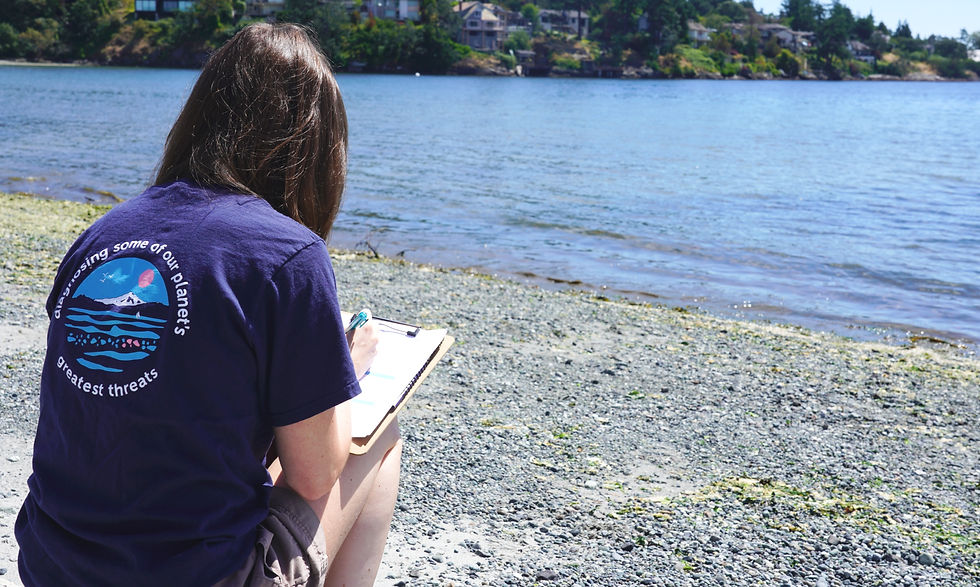
Community scientists, like Glenys and Taya, play a key role in the fight against microplastic and plastic pollution.
To prevent microplastics from entering the environment, we need to know where they come from.
That is where community scientists come in.
By collecting microplastics from local sites, community scientists gather data about what microplastics exist in their local area which can help to inform solutions that help keep microplastics out of our beaches and waterways.
Community members, environmental groups, school classes, beach clean-up groups and anyone compassionate about the environment can collect this data with the right tools.
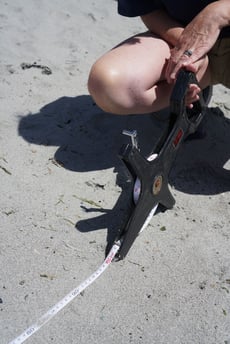 The public needs uniform and scientific methods of microplastic collection to ensure this data can be used by decision-makers and researchers.
The public needs uniform and scientific methods of microplastic collection to ensure this data can be used by decision-makers and researchers.
“It felt like they wanted to be a part of the sampling, and we could easily include them. It was like people wanted to take ownership of what was happening on the beach. It made us feel protective of it,” Glenys explains.
“It felt like they wanted to be a part of the sampling, and we could easily include them. It was like people wanted to take ownership of what was happening on the beach. It made us feel protective of it,” Glenys explains.
Glenys shared that beach sampling, and this community science work gave her a sense of responsibility to take care of the beaches that she’s grown up enjoying. She encourages others to give community science a try.
Glenys and Taya have good friends who volunteer with a local non-profit organization called Surfrider, which works to protect oceans and beaches through activism and engagement. The friend passed Ocean Diagnostics’ call for community scientists along to them.
“I thought it was a good way for us to get involved with the community... it was a real family volunteer experience,” explains Glenys.
Their volunteer experience started as a family affair. Glenys’ husband would join when he was able to. Glenys’ laughs that he had a way of keeping the team on time and efficient!
The moments spent volunteering together were especially special as Taya prepares to leave home for the first time. As she embarks on a new journey to Montreal, Canada, for university, the moments spent volunteering with her family will be cherished.
Whether it be family time or exploration in a classroom setting, community science offers experiential learning.
Glenys believes these tools would be great in a classroom, to teach school-aged children about microplastic pollution and scientific data collection.
“Getting kids involved early can help them be conscious as they get older...” - Glenys.
“Getting kids involved early can help them be conscious as they get older,” Glenys notes that she was surprised to learn about microplastic pollution, but the work made her more aware. “Doing it yourself with your own hands is different from learning from a textbook. Plus, you get to get outside."
Taya agrees: “it’s a good way for young people to get involved within their communities and learn more about the environment around them. Plus, it’s always fun to get outside.”
The pair are certainly alike in their love for the outdoors!
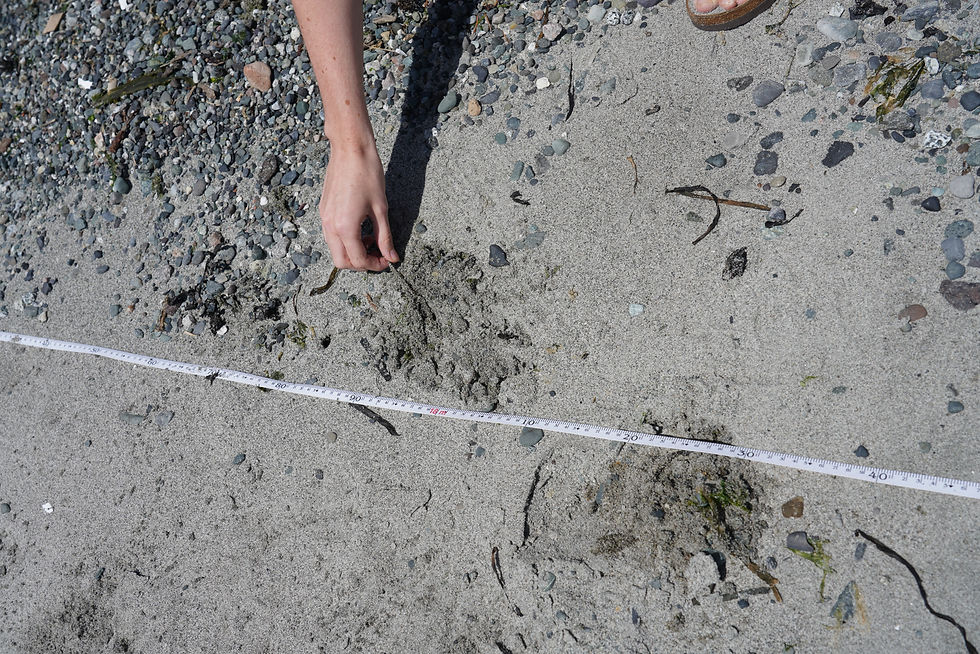
“It’s good for everyone to get involved and feel like they can affect change even in little ways,” says Taya.
Community science is key to addressing the microplastic pollution problem. Protocols and technology in the Ocean Diagnostics’ Community Science Toolkit provide the public with the tools needed to turn microplastics collected on beaches into actionable data. Through community science, we get one step closer to keeping microplastics off our beaches.
Learn more about the Community Science Pilot Project here.
Learn how you can get involved with microplastics community science here.
Ocean Diagnostics Inc. (ODI) is a Victoria, B.C.-based environmental impact company that diagnoses and protects our planet from the threats of plastic pollution and biodiversity loss. Through innovative technology, cutting-edge laboratory capabilities and collaborative partnerships, ODI enables scientists and the public to collect the data needed to influence local and global solutions.
